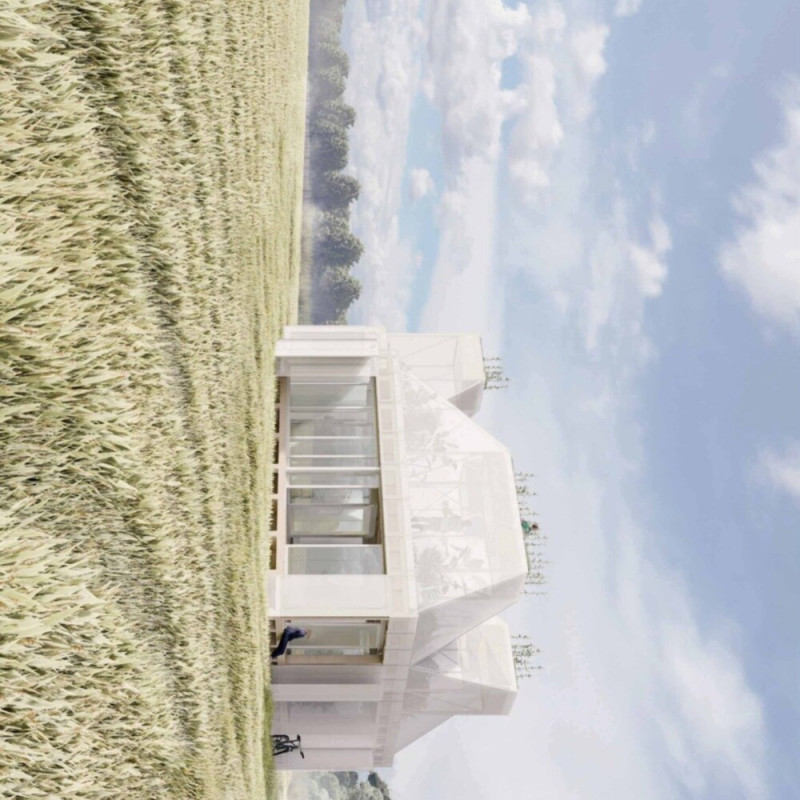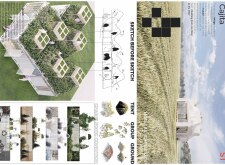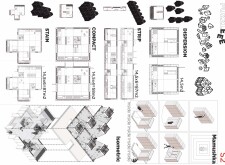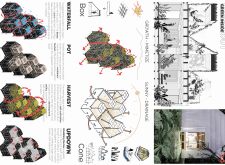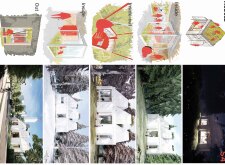5 key facts about this project
Unique Modular Design for Versatile Living
One of the standout features of the Cajita project is its modular design, which allows for various configurations based on user requirements. The project accommodates different lifestyles through models such as compact, strip, and dispersed layouts, highlighting adaptability in residential architecture. Each configuration supports efficient space utilization while maintaining comfort and functionality. The emphasis on modularity also facilitates easy construction and customization, allowing residents to modify their living spaces in response to changing needs.
The architectural plan is complemented by the integration of green roofs and living walls, contributing to ecological sustainability and enhancing urban biodiversity. These design elements serve as functional and aesthetic enhancements, capturing rainwater and promoting plant growth within the residential structure. The ability to incorporate vegetation directly into living spaces challenges conventional notions of housing and underscores the importance of environmental stewardship within the residential sector.
Integration of Natural Elements in Design
The Cajita project embodies a commitment to environmental integration. Each structural element is strategically designed to promote interaction with the surrounding landscape. The placing of windows and the use of transparent materials enable natural light to flood the interiors, reducing the need for artificial lighting and boosting overall well-being. The architectural materials selected—lightweight steel or wood for the framework and eco-friendly finishes—align with sustainability principles, ensuring energy-efficient living.
The project also emphasizes communal and shared spaces, encouraging interaction among residents while preserving personal privacy. This is achieved through thoughtful spatial configurations that balance private and shared areas efficiently. The incorporation of natural water management systems, such as harvesting rainwater, further enhances the ecological focus of the design, ensuring that the project contributes positively to its environment.
The architectural plans and sections of the Cajita project offer deeper insights into the innovative design approaches employed. By exploring the architectural designs, readers can gain a comprehensive understanding of how modularity, sustainability, and nature connectivity create a harmonious living environment. Interested parties are encouraged to review these architectural elements to appreciate the thoughtful design decisions that shape this project.


